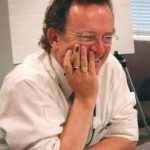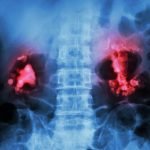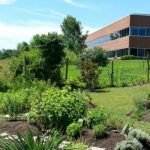Professional Identity Formation
David J. Schleich, PhD
Education
Making Sense of Hobbled Matriculation Numbers in 2017-18
Most naturopathic programs in North America this year are experiencing a decline in likely matriculation cohorts for Fall 2017, which pencils out as a slump in enrollment through to the end of the present decade. Not only do such forecasts play havoc with budgets; they also disrupt the recent, sustained growth of the profession across North America. So, what has caused this slump and will it endure? In a recent budget meeting at NUNM, a senior professor – while listening to detailed demographics about millennials, concerns related to student debt, and particulars about operations cutbacks – asked what is likely the “elephant in the room” question regarding these circumstances: Is the decline in enrollment because the naturopathic profession is being assimilated?
In order to drill down into that question (and into its corollaries, such as: are our modalities being hijacked willy-nilly, or is there confusion about where the boundaries lie among naturopathic medicine, holistic medicine, and integrative medicine?), the question of professional identity formation rears its head yet again. Indeed, there are many sub-questions on this theme which are worth reviewing, the top 10 being well known:
- What exactly is a profession, and does the naturopathic medical community constitute a profession?
- What are the characteristics of the socialization process for new entrants to the naturopathic profession?
- What are the educational foundations of professional preparation?
- Will professional hospital training ever prevail in the naturopathic curriculum?
- Has the naturopathic profession achieved social closure as a profession and converted specialized, codified knowledge into social and economic rewards?
- Is the naturopathic profession a major or minor profession?
- How does the scope of naturopathic medical practice differ from other primary care medical groups?
- What is meant by “professional education”?
- Is the naturopathic profession required to ground any codified body of knowledge in scientific principles?
- What is the role of research in that process?
The literature of the professions includes consideration of numerous, related factors in the emergence, development, and sustainability of professions in many sectors, and at many different stages in their process of establishing themselves with credibility and sustainability in civil society. The literature goes beyond, say, the nature of health professional expertise; it embraces scholarship about professional expertise, professional formation, and intra-professional competition. We can find adequate grounding in this literature to figure out what is occurring this year and next, in particular, and perhaps especially in the United States. The landscape differs somewhat in Canada.
Social Closure & the Making of Professionals
Larson (1977) explains how the social sciences provide a framework for describing and understanding the concept of the professions in civil society, and how an occupation tries to “translate one category of scarce resources – special knowledge and skills – into another – social and economic rewards” (xvii). Richardson (1985) refines our understanding of this process, reminding us that “it is axiomatic that professionals possess a complex set of techniques which requires time and training to master” (p.45). “A profession takes shape,” he adds, “around its ability to codify knowledge and standardize the training of its practitioners” (p.45). Murphy (1988) demonstrates how “social closure” and “monopolization and exclusion” ensue for professional groups successful in structuring, transmitting, and codifying their knowledge and specialized skills. Richardson (1987, 1989) further clarifies aspects of closure of a profession, a phenomenon very much in play in the evolution of primary healthcare in North America. Indeed, critical is our understanding the power and importance of that codified body of knowledge and its transmission “through meritocratic institutions, such as universities.” If these conditions are in place, the government will “grant the profession a monopoly on the practice of these skills” (p.45). How professional knowledge is structured, Richardson emphasizes, and the educational pathways established for that profession, together generate “instrumental consequences for the profession” (p.45).
Elsewhere, Richardson (1985) states that despite the educational practices and policies of a profession, “independently of the technical power of the profession’s knowledge base and the efficacy of any particular pedagogy for transferring this knowledge to new generations of practitioners” (p.45), there is an essential symbolic link “between the actions of the profession and the values of key actors in the environment” (Richardson, 1985, p.146). Edelman (1964) established much earlier a contextualizing conversation for students of the professions about those actors in their environments, focusing on their symbolic uses of policy. Richardson (1985) builds on this important benchmarking work in his discussion of the symbolic and substantive elements that legitimize professional practice.
In addition, Larson (1977) discusses how symbols legitimize professional practice, manifesting in career paths and the regulation of groups with specialized training and skills that, ideally, have a voluntary clientele and are self-regulating. Richardson (1992) later added to this view of the professions by pointing out the “scales of professionalization” and typologies which accommodate the “semi-professions” (p.44). He explains that “the success of a profession can be determined by the degree to which it has successfully closed access to a particular set of market opportunities for its own members” (p.45). This process of social closure relates to the primary healthcare professions in that medical doctors in the 20th century successfully dominated bio-medical science, generating, in the process, a number of “minor” professions in the same field. This creation of a category of minor professions accompanies another aspect of professional formation: the differentiation of the core professional group, also discussed in the work of Bucher (1988). In any case, Glazer’s term “minor professions” (1974) has been applied to naturopathic medicine by a number of commentators (Gort, 1986; Bucher, 1988; Baer, 1987, 1992, 2001; Cody, 1985; Boon, 1995, 1996). And, it is this very discussion which is at the root of the NUNM professor’s question, “Is the decline in enrollment because the naturopathic profession is being assimilated? The quick answer is “not quite” and “no” at the same time. Where we are known and understood, there is much business opportunity. Where there is ambiguity, we tend to have wobbly starts. But not for long, because patients quickly discern that naturopathic doctors are as much about their principles as they are about their therapies.
Searching for a Naturopathic Professional Identity
For the naturopathic physician, the highest purpose of medical education is not about doing, but about being. Even the allopathic practitioners get this. For example, Cooke and O’Brien, in their important work, “Educating Physicians: A Call for Reform of Medical School and Residency” (2010), called for a reframing of how doctors are educated in the 21st century, away from what Wald calls “doing the work of a physician,” and headlong toward “being a physician” (Wald, 2015, p.701) That is fine and dandy; however, the naturopathic profession had this mindset down from the get-go.
Professional identity formation, or PIF, takes a school which sustains tradition alongside the pressures of primary-care physician training. PIF takes a whole village and a whole country of elders and mentors. PIF takes an entire legacy of not only codified knowledge, but also clinical practice and specific principles that are uniquely naturopathic, and not a functional hybrid of biomedicine and traditional naturopathic modalities. Cooke and O’Brien’s work – published by the Carnegie Foundation exactly to the month a century after that same Foundation published the Flexner Report – asked the allopathic world to pay more attention to exactly that kind of professional identity formation. The process of socializing the naturopathic doctor in training, though, has become fuzzy. The drift to green allopathy is enticing. That fuzziness, along with the unfortunate demographics and politics of the remaining years of this decade, and complete with a new administration, make our projections for enrollment uncertain.
Naturopathic medicine, as a profession, yearns for an identity which, as the literature above points out, is socially constructed. Recently, Cruess et al (2015) examined this process in some detail. It boils down to what Vignoles et al (2011) identify as the 3 unequal domains of professional identity formation: individual identity, relational identity, and collective identity. Scholar after scholar gets into this discussion. Jarvis-Selinger et al (2012) insist that “competency is not enough.” They comment:
Identity formation begins when newcomers join a community with the prospect of becoming full participants… an ongoing process of interpreting and reinterpreting oneself as a certain kind of person in a given context, a process that, in the continuum of medical education, will be repeated in the shift from studenthood to clerkship to residency and beyond. (Jarvis-Selinger et al, 2012, p.1188).
Our graduates’ experiences, once away from our thinly-populated in-patient clinics, vary immensely, state by state, and province by province. In this regard, then, relationships with other naturopathic doctors are hugely important, as pointed out strongly by Haidet et al, back in 2008. The practice implications of the formative relationships in naturopathic medical schools are significant; extending those connections is paramount to PIF. That within the profession there are markedly different ideas afoot about what a naturopathic education should or shouldn’t be, and about how a graduate should practice in an increasingly integrative health continuum, adds to the confusion about PIF. This confusion seems to have impacted potential students whose numbers are smaller and whose concerns about return on investment for high tuition and living expenses while in school are affecting our incoming cohort population.
The allopathic and the naturopathic doctor each look, touch, and listen. Each has lab tests and instruments to do the work of physical and clinical diagnosis. Indeed, these similarities have been in place from the days of Frederick Gates and William Osler (1885) who anticipated a time when all medicine, natural or scientific, could be “reduced to an exact science” (Bliss, 1999). Osler made it clear in The Principles and Practice of Medicine (1892), though, that the rigor which must accompany scientific medicine was frequently not present in such fields as naturopathy, homeopathy, and osteopathy at the time. Osler contended that “medicine must rest on science” (Bliss, 1999). As a clinical physician, Osler wanted a scientific underpinning to “working at the bedside,” focused on the “whole patient,” not unlike the naturopathic physician who is trained to develop a relationship with the patient which includes a comprehensive awareness of the person’s complete physical, spiritual, and mental makeup. Boon (1996) and Gort (1988) before her identified the contemporary manifestations of this tension between holistic and scientific practitioners, and indeed between holistic and scientific naturopathic practitioners. The holistic practitioner’s spiritual and physical words are “not separate, but manifestations of a single life force” (Boon, 1996). Consequently, symptoms, whether physical or spiritual, command the same attention. Their scientific counterparts, however, practice based on a biomedical model, which reduces all pathology to a cellular or molecular level. For the latter, the scientific method is the route to curing a disease. For the former, environment and spiritual balance are key factors in a treatment protocol. Confusion about what this means influences new student choice these days in a post-graduate health-sciences terrain where holistic medicine, integrative medicine, and naturopathic medicine collide in terms of identity.
As Schon reports (1987), “the greater one’s proximity to basic science, the higher one’s academic status.” Professional schools of medicine, in such a context, would strive to train healers and socialize them as biotechnical problem-solvers. Routinely, they would follow a sequence that immersed the student in medical science and then in supervised clinical practice. Glazer (1974) describes this approach as a “yearning for the rigor of science-based knowledge and the power of science-based technique.” This fascinating polarity has influenced the development of naturopathic medical education in North America, and the concomitant emergence of so-called “functional medicine,” “holistic medicine,” and “integrative medicine” adds to branding confusion. A dimension of the problem, then, is the persisting but less pervasive confusion among the public, elected officials, government policymakers, other professional healthcare providers, higher education administrators, academics themselves, and ministry officials about what naturopathy and naturopathic medicine actually are. Thus, health career counselors and the gatekeepers of Medicare money which supports residencies largely ignore naturopathic professionals fresh out of medical school. That is another contributor to the softening of demand.
In fact, out there are many definitions of what a naturopathic doctor is. The analytical tools and definitions of naturopathic medicine from Dower, Hough, and O’Neil, in their Arkay Foundation report, “Profiling the Professions: A Model for Evaluating Emerging Health Professions” (September 2001), out of the University of California’s Center for the Health Professions, show this muddled taxonomy. Even though this study is now somewhat dated, its breadth, inclusiveness, and utility help dust off the problem. For example, the categories include, at the very least, government regulation and private sector recognition, the education and training of naturopathic doctors, and a model for evaluation (Dower, O’Neil, & Hough, 2001). Moreover, the comprehensive nature of the descriptions and definitions considers all those practitioners, regulated and otherwise, who find value in naturopathic modalities and therapies. The resulting breadth and objectivity are most helpful in sorting out the conflicting claims of philosophical, medical, and even political positions taken by competing groups within the integrative community. Prospective students need to have access to this conversation, as do our current professors, actually.
The Cycles of History
Way back in 1951 Wardell predicted that naturopathy would “soon disappear as a distinct medical field” (Wardell, 1951, p.39), and Roth decided that it was a “dying health movement” (Roth, 1976, p.121). Baer concluded 15 years later that naturopathic medicine was actually entering “a period of rejuvenation” (Baer, 1992, p.85). Barzansky, Jonas, and Etzel were able to report by the end of that decade, “complementary medicine has become a serious subject in medical schools” (Barzansky et al, 2000). Indeed, by 1998 the American Medical Association (AMA) had even gone so far as to sponsor a systematic review of alternative medicine in all of its 9 journals. Twenty years later there are 2-dozen states and provinces in North America where naturopathic professionals have achieved a measure of social closure. Twenty years later there is the International Congress of Naturopathic Medicine, now a half-decade into successive meetings in Europe, attracting this year alone over 600 naturopathic professionals from 50 countries.
Also hampering progress in growing naturopathic cohorts, and thus clarity for potential students about the value to their future professional working lives of a career in naturopathic medicine, is the criticism that naturopathy “has never had a well-integrated philosophical core or a specific regimen of treatment.” (Baer, 2001, p.86) Baer’s is a strong voice in locating the place of naturopathic medicine. Tracing its roots to the Kneipp water societies of the last century, he concludes that naturopathy is “in many ways … the heir of the nineteenth century hygiene movement” (p.86) but that it has evolved into a complex, modern “medical system.” At the same time, Bloomfield contends that “naturopathy for some people means all the forms of non-allopathic medicine which depend on ‘natural’ remedies and treatments” (Bloomfield, 1983, p.116).
There are, too, more global medical traditions which are getting attention in North America. For example, Michael Worboys describes “three great systems” of “medical ideas and practices”: the Chinese, Indian, and Western. There are those students of the history of medicine who would understand naturopathy as an eclectic blend of ideas from among all of these 3 “great systems” (Worboys, 1997, p.249). Even though naturopathic medicine’s direct lineage reaches back to Europe and came to North America principally through the United States, its practitioners insist that naturopathic medicine can trace its roots into antiquity on several continents (Josefek, 2000). Some observers contend that naturopathic medicine has more in common with Pen Ts’ao and the Huang Di Nei Jing, ancient Chinese healers, than modern mainstream medicine does (1985; Loudon, 1997). Other observers ignore claims to ancient origins and focus entirely on the future development opportunities of naturopathy (Salzman & Matathia, 1998). We need to familiarize potential students with all these formative influences. Elders of the naturopathic profession insist that the modern ND rests his or her profession on a foundation and filaments of knowledge and practice that transcend centuries.
Now, that is something to declare in our recruitment efforts, along with an exceptional track record of an ever-expanding repertoire of skills, knowledge, and research from which the modern naturopathic student can benefit.
Hobbled matriculation in 2017 can shift back to growth mode very quickly. First, let us understand and make noise across every preparatory program we can connect with about how we are unique and here to stay. Then we might answer the professor’s question confidently with the assertion: No, the profession is not being assimilated; it is finding its balance, its legs, and its future, and that future is friendly.
References:
Aakster, C. W. (1986). Concepts in Alternative Medicine. Social Science and Medicine, 22 (2): 265-273.
Baer, H. A. (1987). Divergence and convergence in two systems of manual medicine: osteopathy and chiropractic in the United States. Medical Anthropology Quarterly, 4, 176-193.
Baer, H. A. (1992). The potential rejuvenation of American naturopathy as a consequence of the holistic health movement. Medical Anthropology, 13, 369-383.
Baer, H. A. (2001). Biomedicine and Alternative Healing Systems in America: Issues of Class, Race, Ethnicity and Gender. Madison, WI: University of Wisconsin Press.
Barzansky, B., Jonas, H. S., & Etzel, S. L. (2000). Educational programs in U.S. medical schools. JAMA, 284, 1114-1120.
Bloomfield, R. J. (1983). Naturopathy. In: Bannerman, R., Burton, J., Wen-Chieh, C. (Eds.). Traditional Medicine and Health Care Coverage. A Reader for Health Administrators and Practitioners. Geneva, Switzerland: World Health Organization; pp. 116-123.
Boon, H. (1996). The Future of Naturopathic Medical Education. Primary Care Integrative Natural Medicine: The Healing Power of Nature. Ph.D. dissertation. Graduate Department of Pharmacy, University of Toronto, Canada.
Boon, H. (1995). The making of a naturopathic practitioner: the education of alternative practitioners. Health and Canadian Society, 3 (1-2): 15-41.
Bliss, M. (1999). William Osler: A Life in Medicine. Toronto, Canada: University of Toronto Press.
Bucher, R. (1988). On the Natural History of Health Care Occupations. Work and Occupations, 15 (2): 131-147.
Cody, G. (1985). History of Naturopathic Medicine. In: Pizzorno, J. E. & Murray, M. T. (Eds.). Textbook of Natural Medicine. Seattle, WA: John Bastyr College Publications.
Cooke, M., Irby, D. M., & O’Brien, B. C. (2010). Educating Physicians: A Call for Reform of Medical School and Residency. San Francisco, CA: Jossey-Bass.
Cruess, R. L., Cruess, S. R., Boudreau, J. D., Snell, L., Steinert, Y. A schematic representation of the professional identity formation and socialization of medical students and residents: a guide for medical educators. Acad Med, 2015, 90 (6), 718-725.
Dower, C., O’Neil, E. H., & Hough, H. J. (2001). Profiling the Professions: A Model for Evaluating Emerging Health Professions. Center for the Health Professions. University of California, San Francisco, CA. Available at: https://nasemso.org/EMSEducationImplementationPlanning/documents/Model2.pdf. Accessed June 1, 2017.
Glazer, N. (1974). The Schools of the Minor Professions. Minerva, 12 (3), 346-363.
Gort, E. (1986). A Social History of Naturopathy in Ontario: The Formation of an Occupation. MSc Thesis. Division of Community Health, University of Toronto, Canada.
Haidet, P., Hatem, D. S., Fecile, M. L., et al. (2008). The role of relationships in the professional formation of physicians: case report and illustration of an elicitation technique. Patient Educ Couns, 72 (3), 382-387.
Harvis-Selinger, S., Pratt, D. D., & Regehr, G. (2012). Competency is not enough: integrating identity formation into the medical education discourse. Acad Med, 87 (9), 1185-1190.
Kaptchuk, T. J. & Eisenberg, D. (2001). Medical pluralism in the United States. Ann Intern Med, 135 (3), 189-195.
Josefek, K. J. (2000). Alternative medicine’s roadmap to the mainstream. Am J Law Med, 26 (2-3), 295-310.
Larson, M. S. (1979). The Rise of Professionalism: A Sociological Analysis. Berkeley, CA: University of California Press.
Murphy, R. (1988). Social Closure: The Theory of Monopolization and Exclusion. Oxford, England: Clarendon Press.
Neuburger, M. (1932). The Doctrine of the Healing Power of Nature Throughout the Course of Time. Translation by Boyd, L. J. The Journal of the American Institute of Homeopathy, 25, 861-884, 1011-1465.
Osler, W. (1885). The growth of a profession. Canada Medical & Surgical Journal, 14, 129-155.
Richardson, A. J. (1985). Symbolic and substantive legitimation in professional practice. Canadian Journal of Sociology, 10 (2), 139-152.
Richardson, A. J. (1987). Professionalization and intraprofessional competition. Work and Occupations, 14 (4), 591-615.
Richardson, A. J. (1989). Corporatism and intraprofessional hegemony: A study of regulation and internal social order. Accounting Organizations and Society, 14 (5-6), 415-431.
Richardson, A. J. (1992). Educational policy and professional status: A case history of the Ontario accountancy profession. Journal of Canadian Studies, 27 (1), 44-57.
Roth, J. (1976). Health Purifiers and Their Enemies: A Study of the Natural Health Movement in the United States with a Comparison to its Counterpart in Germany. New York, NY: Prodist.
Salzman, M. & Matathia, I. (1998). Lifestyles of the next millennium: 65 forecasts. The Futurist, 32 (5), S1(6).
Schon, D. (1987). Educating the Reflective Practitioner. San Francisco, CA: Jossey-Bass Publishers.
Schwartz, S. J., Luyckx, K., Vignoles, V. L. (Eds.). (2011). Introduction: Toward an Integrative View of Identity. In: Handbook of Identity Theory and Research. New York, NY: Springer.
Wald, H. S. (2015) Professional Identity (Trans) Formation in Medical Education: Reflection, Relationship, Resilience. Academic Medicine, 90 (6), 701-706.
Wardwell, W. I. (1951). Social Strain and Social Adjustment in the Marginal Role of the Chiropractor. PhD Dissertation. Harvard University, Boston, MA.
Worboys, M. (1997). The Spread of Western Medicine. In: Loudon, I. (Ed.). Western Medicine: An Illustrated History. New York, NY: Oxford University Press.
Image Copyright: <a href=’https://www.123rf.com/profile_iofoto’>iofoto / 123RF Stock Photo</a>
 David J. Schleich, PhD, is president and CEO of the National University of Natural Medicine (NUNM), former president of Truestar Health, and former CEO and president of CCNM, where he served from 1996 to 2003. Previous posts have included appointments as vice president academic of Niagara College, and administrative and teaching positions at St. Lawrence College, Swinburne University (Australia) and the University of Alberta. His academic credentials have been earned from the University of Western Ontario (BA), the University of Alberta (MA), Queen’s University (BEd), and the University of Toronto (PhD).
David J. Schleich, PhD, is president and CEO of the National University of Natural Medicine (NUNM), former president of Truestar Health, and former CEO and president of CCNM, where he served from 1996 to 2003. Previous posts have included appointments as vice president academic of Niagara College, and administrative and teaching positions at St. Lawrence College, Swinburne University (Australia) and the University of Alberta. His academic credentials have been earned from the University of Western Ontario (BA), the University of Alberta (MA), Queen’s University (BEd), and the University of Toronto (PhD).









